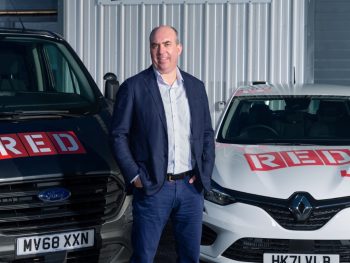Deploying C1 training for commercial vehicle drivers could help fleets future-proof their business from changes in licensing legislation, providing added flexibility as electric vehicles evolve.

New pure electric vans arrivals, such as Ford’s e-Transit, the Mercedes-Benz eSprinter and the Maxus models, are heavier than conventional ICE-powered models – and mean that operators adopting eLCVs face additional licensing and training requirements, according to RED Driver Risk Management.
It’s pointed to changes by the DVSA that introduce a new training and licensing requirement for anyone driving an alternatively fuelled vehicle between 3.5 and 4.25 tonnes.
RED CEO Seb Goldin thinks the new legislation is too narrow – and it won’t be long before large EV panel vans weigh more than 4.25 tonnes, due to using larger battery packs to provide the increased electric range required by businesses such as delivery fleets.
And he’s urging fleets to think ahead; rather than paying for training that could only have a brief period of suitability, RED believes the best solution is for businesses to assess their drivers and put those eligible forward for the more encompassing C1 training, which allows employees to drive vehicles from 3.5 tonnes to 7.5 tonnes GVW.
Goldin said that while the cost of C1 7.5-tonne training will admittedly be higher than that required for the 4.25-tonne system, putting drivers through C1 training opens up a host of new options for businesses.
It also future-proofs fleet operations and commercial vehicle procurement range. Goldin added that adopting such training by operators will “give them a fleet of drivers qualified to safely and economically drive a fleet of vehicles up to 7.5 tonnes” .
“This will allow businesses to be more flexible in their operations, countering driver absences and being prepared to adapt working practices if a new contract demands it.”
He finished: “Businesses are looking at a period of huge change in the years ahead as we transition to more EVs on fleet, so it makes sense to get ahead of the game and future-proof as much of your operation as you can.”

